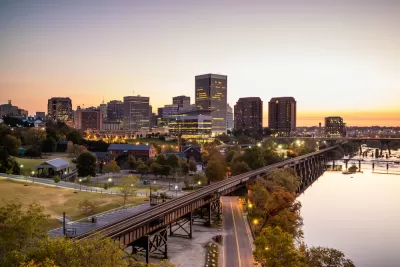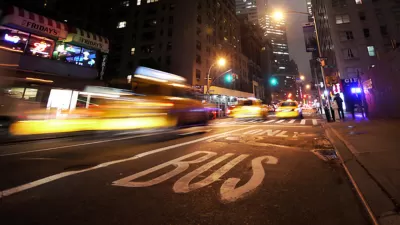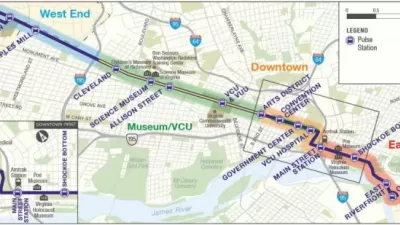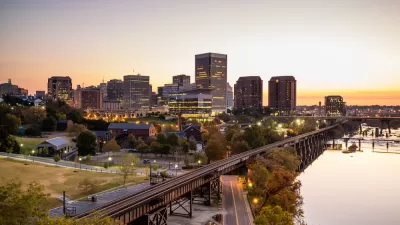Richmond, Virginia has achieved a big ridership bump, without a big investment.

Since a system redesign and adding new bus rapid transit (BRT) route, ridership has climbed 21 percent in the city of Richmond, Virginia. Meanwhile, ridership is falling in many U.S. cities, especially on buses. The Greater Richmond Transit Company system achieved these ridership improvements with a modest increase to its annual budget, some county and city capital funds, and a TIGER grant from the federal government. The most important change was the opening of its new seven-mile Bus Rapid Transit line, "The Pulse," which includes three miles of dedicated lanes and many of the features that make BRT faster than conventional bus service," Angie Schmitt reports for Streetsblog USA.
With less than a quarter of a million people, the city shows how medium-sized communities can use strategic investments to make big transit improvements. In Richmond's case, the addition of BRT was coupled with a redesign of the bus routes. "The new routes offer increased service frequency on five lines. The redesign, which does require riders to transfer more frequently, was cost-neutral for the agency," Schmitt writes. While riders sometimes push back against these types of route redesigns, not wishing to switch buses, the rework has been popular so far.
FULL STORY: Richmond Shows How to Boost Transit in a Smaller City

Study: Maui’s Plan to Convert Vacation Rentals to Long-Term Housing Could Cause Nearly $1 Billion Economic Loss
The plan would reduce visitor accommodation by 25,% resulting in 1,900 jobs lost.

North Texas Transit Leaders Tout Benefits of TOD for Growing Region
At a summit focused on transit-oriented development, policymakers discussed how North Texas’ expanded light rail system can serve as a tool for economic growth.

Using Old Oil and Gas Wells for Green Energy Storage
Penn State researchers have found that repurposing abandoned oil and gas wells for geothermal-assisted compressed-air energy storage can boost efficiency, reduce environmental risks, and support clean energy and job transitions.

From Blight to Benefit: Early Results From California’s Equitable Cleanup Program
The Equitable Community Revitalization Grant (ECRG) program is reshaping brownfield redevelopment by prioritizing projects in low-income and environmental justice communities, emphasizing equity, transparency, and community benefits.

Planting Relief: Tackling Las Vegas Heat One Tree at a Time
Nevada Plants, a Las Vegas-based nonprofit, is combating the city’s extreme urban heat by giving away trees to residents in underserved neighborhoods, promoting shade, sustainability, and community health.

How Madison’s Tree Planting Efforts Are Growing a Healthier Community
Madison’s annual tree planting initiative is enhancing environmental resilience, public health, and community livability by adding 1,400 carefully selected trees citywide, with strong community and institutional support for urban forestry.
Urban Design for Planners 1: Software Tools
This six-course series explores essential urban design concepts using open source software and equips planners with the tools they need to participate fully in the urban design process.
Planning for Universal Design
Learn the tools for implementing Universal Design in planning regulations.
Ascent Environmental
Borough of Carlisle
Institute for Housing and Urban Development Studies (IHS)
City of Grandview
Harvard GSD Executive Education
Toledo-Lucas County Plan Commissions
Salt Lake City
NYU Wagner Graduate School of Public Service





























